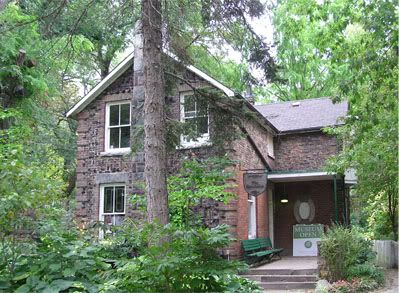 |
[Photo by KPA]
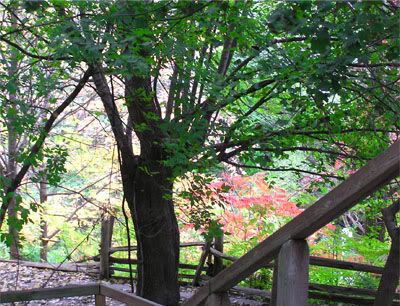 |
[Photo by KPA]
The Cabbagetown/Regent Park Community Museum is a not-for-profit organization that strives to actively collect, preserve and display the history of Cabbagetown and Regent Park from the late 1800s/early 1900s to present day. Using oral histories, artifacts, photographs and printed material, we will present the stories of the local community and place them within the larger, global context...
Presently, the museum has a temporary home at the Riverdale Farm's Residence House. Also known as the Resident Zookeeper's House this two-story building, which stands beside the Meeting House and duck pond; was built in 1902 by prisoners of the Toronto Don Jail. Over the years the building acted as the Zoo Keeper's home, veterinary hospital, and temporary morgue for the Necropolis Cemetery. Today the Residence not only houses some of the Cabbagetown Regent Park Museum's collection, it also functions as a staff building, and is used for a variety of farm- related and community-based programs. [Source: Cabbagetown Regent Park Museum website]
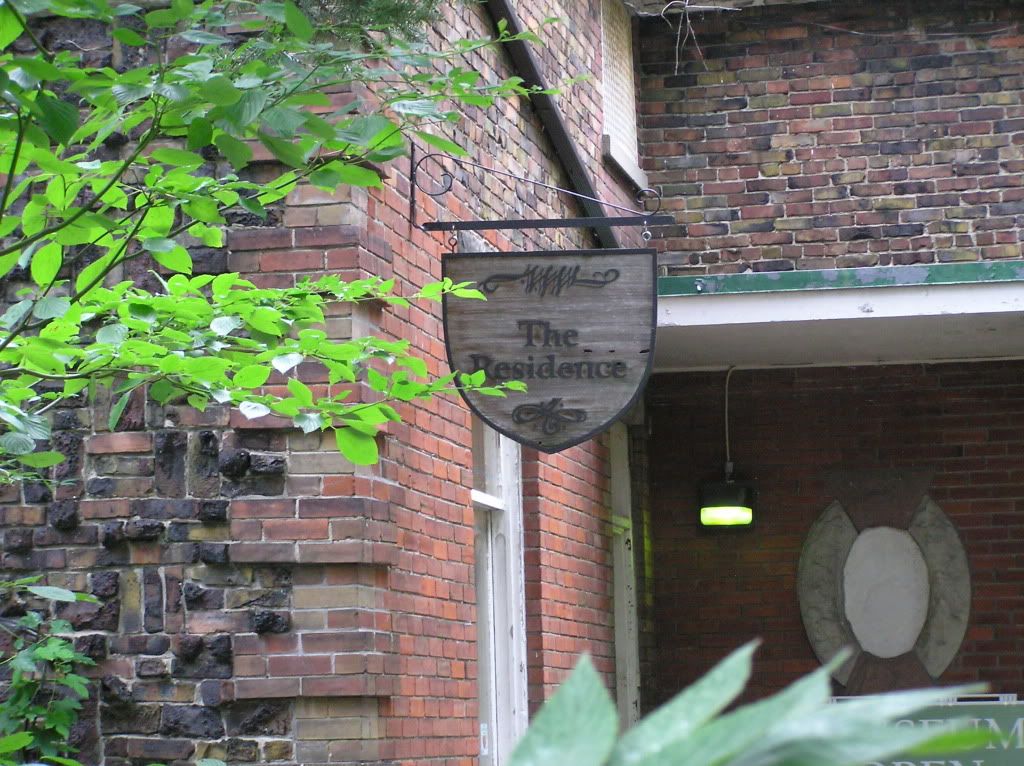 |
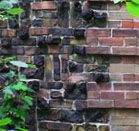 |
[Photos by KPA]
Named for the distinctive sound they make when banged together, clinker bricks are the result of wet bricks placed too close to the fire. The intense heat of coal-burning traditional kilns created a hard, durable brick that often twisted into volcanic shapes and textures. Overbaking produced rich, warm colors as well that ran the gamut from reds, yellows, and oranges to deep, flash-burned browns, purples, and blacks. No two clinker bricks were alike, rendering them trash to brick manufacturers who prized uniformity, but treasure to early modern architects, builders, and homeowners seeking uncommon architectural detail.The Residence now hosts a mini-museum of Cabbagetown artifacts showing the area's social and cultural history.
During the Arts & Crafts era, clinkers were used to accentuate bungalow architecture, creating visual interest in focal points such as chimneys, porch supports, and garden walls. The use of clinkers in English walls during the 19th century was well documented, but Charles and Henry Greene, who incorporated clinkers in their most famous California houses, may have been impressed after seeing the bricks used in buildings near Boston, where both brothers attended MIT. [Source: The Accidental Charm of Clinker Bricks]
Some interesting items from the early 20th century include:
- A pram
- Lace christening clothes
- Photos, badges and other memorabilia of WWI soldiers from Cabbagetown
- Toy Fire Engine
- The history of the area's Fire Department
- A Betty Boop war doll
- Vintage postcards
- Toys and artifacts
Soldier from the 48th Highlander of Canada who lived in Cabbagetown, who served in WWI:
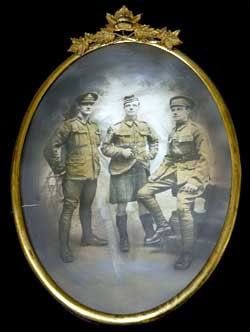 |
on either side, served with the 48th Highlanders
of Canada in WWI
[Source: Cabbagetown Regent Park Museum website ]
The most popular item is the doll house:
 |
dating from the 1870s.
Right: 1983 Second Empire replica dollhouse by J.E.M. Clark
[Source for doll house and house - Cabbagetown Preservation Association Newsletter. Spring 2009, volume 19 issue 1, P.5. - pdf file]
[The] Second Empire Victorian Dollhouse was built in 1983 by Master Craftsman John Edward Morris Clark of Tottenham, Ontario for his younger daughter, Natalie’s tenth birthday. John is also a custom Gun Maker specializing in 18th century flintlock rifles pistols and fowling pieces; and manufactures wooden propellers for vintage aircraft [www.clarkindustries.on.ca]. The dollhouse plans were obtained from a woodcrafter in Massachusetts, USA, and it took John roughly 400-hours to complete. The siding and shingles are made from pine strip wood and tongue depressors. The windows and doors were purchased from The Little Dollhouse Company, Toronto, which is the largest and oldest doll house and miniature store in Canada.
The dollhouse represents the type of home that would have been built in a small town or rural area of Ontario in the 1870s and 1880s. It’s a single family home, made of wood, featuring a striking tower, iron work, porches, and, most distinctively, a steeply sloped “mansard roof.” These are all characteristic features of the Second Empire style that influenced Victorian architecture all across Ontario, Canada, Britain, and, of course, France where the “Second Empire” referred to the reign of Napoleon III.
The Second Empire style was also very influential in Toronto. Above all, the mansard roof identifies these buildings. Second Empire architecture in Toronto, and Cabbagetown - Regent Park, was quite a “grand” style, although we see smaller, but still impressive, examples on our own streets. Originally, most buildings shown here were residences, but they have been transformed into other uses.
[Source - Cabbagetown Preservation Association Newsletter. Spring 2009, volume 19 issue 1, P.5. - pdf file]
Country in the City Pt. I is here.